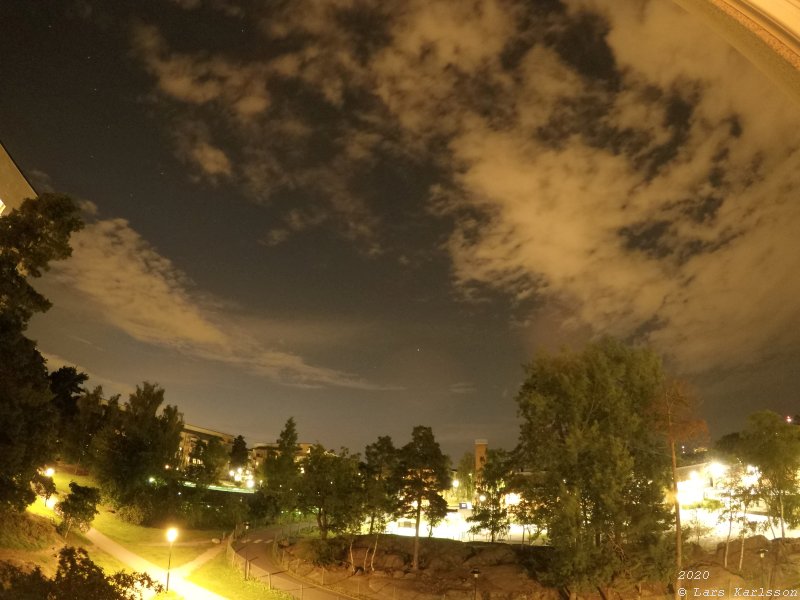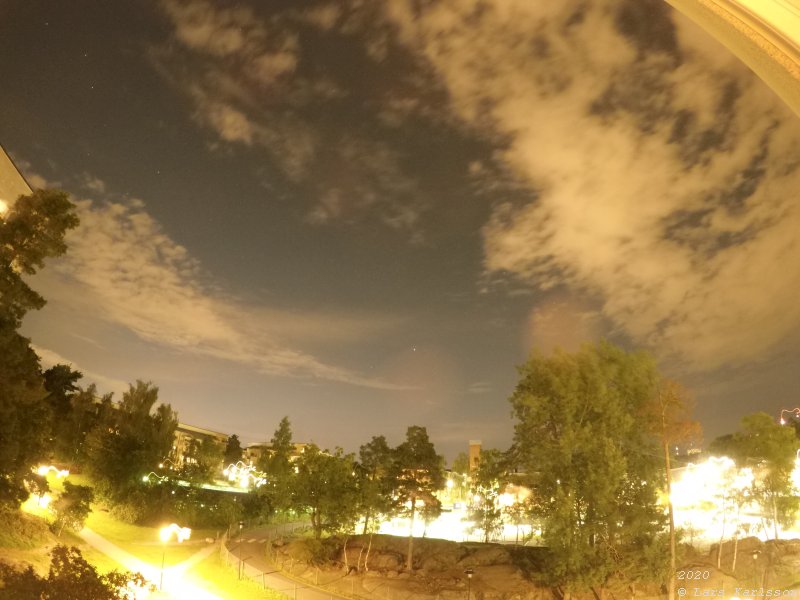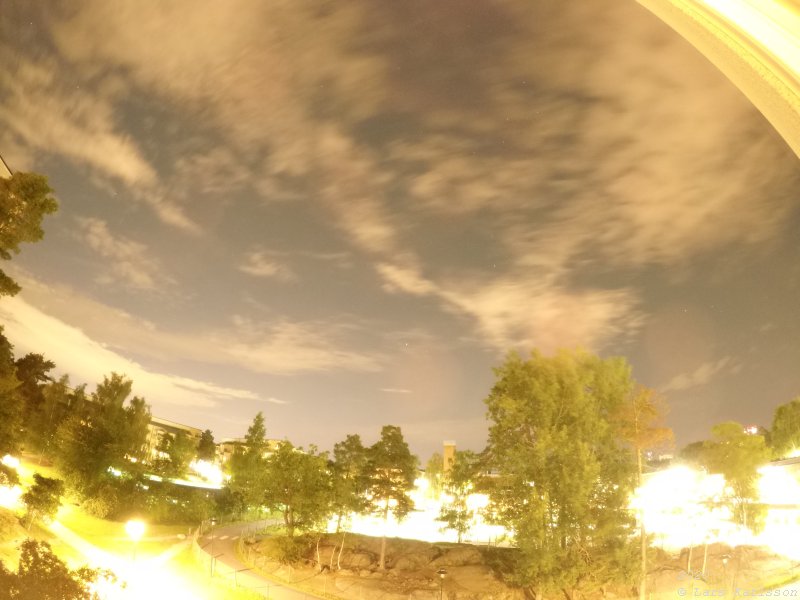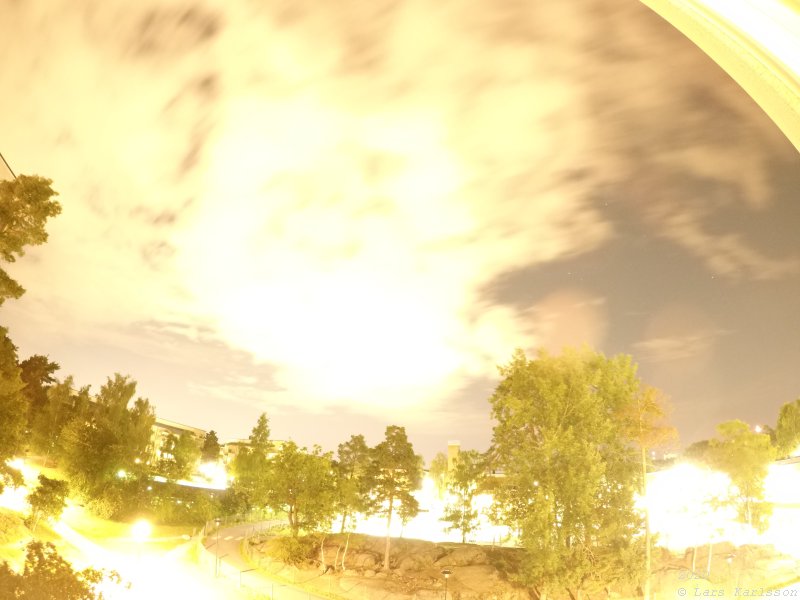|
Advertisement / Annons: |
My astronomy project:
|
Content:
Note: |
2: Some test exposuresNormally I have my Canon 6D full frame camera with a 16 mm fish eye lens. It gives a 180 degree field of view, this GoPro camera with its 3 mm wide angle lens gives about the same fov. You can read my tutorial about photographing meteor showers here: Something about the GoPro Hero5 camera and my earlier Canon EOS 6D camera.
If both lenses are set to f/2.8 the 16 mm lens has a photon out through that is 28 times higher then the tiny 3 mm lens in the GoPro camera. That photons are divided at half as many pixels. A very rough estimate, the Canon / lens system should be about ten times more sensitive per pixel compare the GoPro / lens system. I have done some test with different mode in the setup of the GoPro camera. First I tested in time lapse video mode, very convenient, it produce a 4K movie direct. But it was not very much to see, almost totally black. I tested at ISO 800. I will do a new test later with higher ISO setting. This is the normal mode to use when not doing astrophotos. Second test, time lapse photo mode. Even in this case I didn't get enough sensitivity out from the camera. Third test, time lapse in night time lapse mode. This was the best yet. In my light polluted area it look pretty good. But later when tested at a dark place only the brightest stars appear. In the Exif data it says it's in automatic exposure mode. But all photos got the same ISO800 and it overexposure when the morning come with it's brightness. In that case I had 30 seconds interval and exposure time, at leas the Exif data says that. Later I found if I set the interval to 20 seconds and the exposure time to automatic I can set ISO and EV compensation. But when catching meteors I always want it to be the same exposure time as the interval is set to. With gaps between the exposures meteors can be undetected. Below are some test time lapse sequences with a photo with 5, 10, 20 and 30 seconds exposure. 
5 seconds exposure. 
10 second exposure. 
20 second exposure. This is the exposure time I normally use with my full frame camera and a 16 mm fish eye lens. Longer than that and it will give star trails. 
30 seconds exposure. It's a bit strange, it's in automatic exposure mode, still it over exposure when it's too bright. After that I have done a test at a relative dark place and doing a time lapse of the Perseid meteor shower, Perseids 2020
|
|